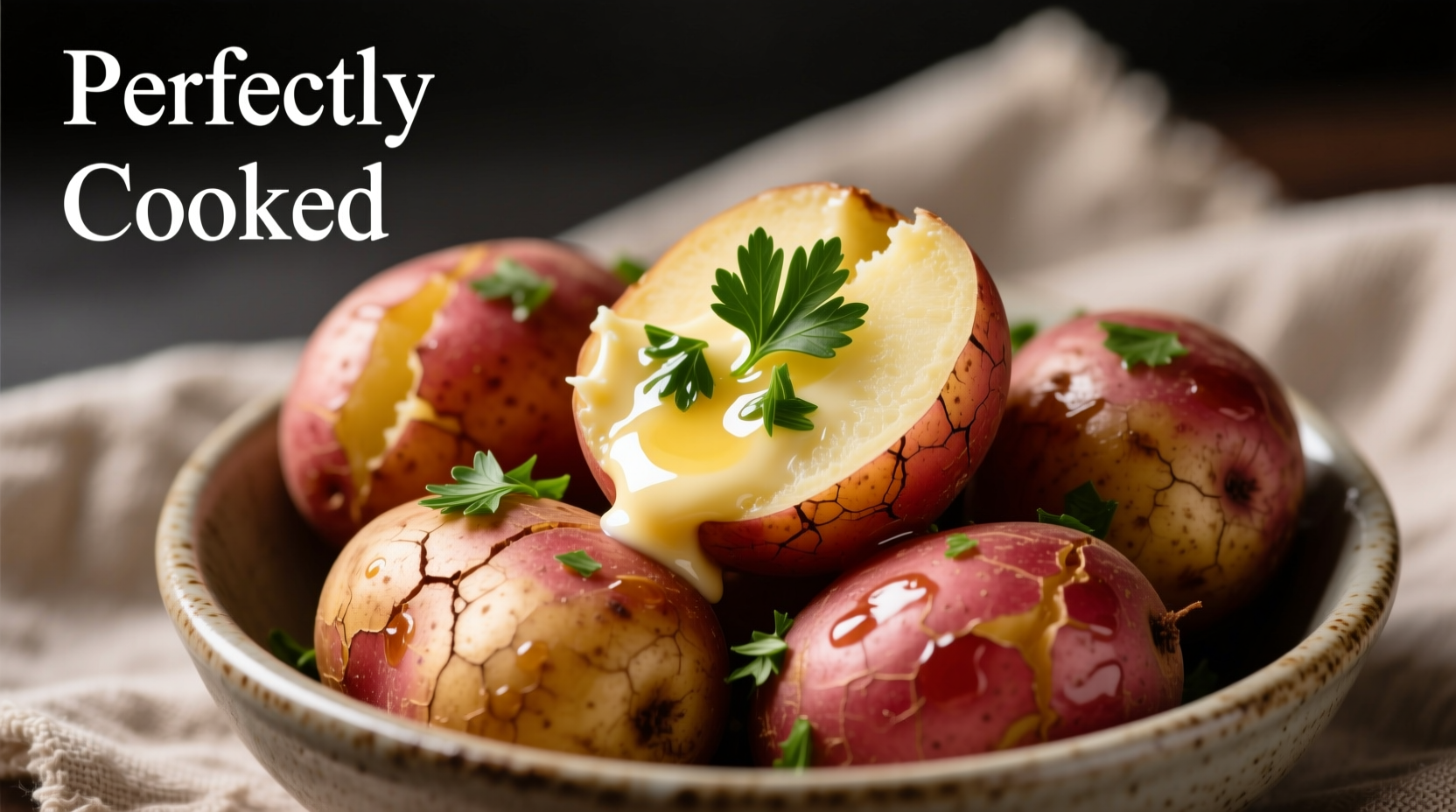Perfectly cooked red potatoes with fresh parsley and butter create a simple yet elegant side dish that enhances any meal. This classic preparation method requires just three core ingredients, takes under 30 minutes, and preserves the potatoes' natural texture while adding rich herbal notes. Follow our professional chef-tested technique for consistently delicious results every time.
| Red Potato Variety | Best Cooking Method | Texture Profile | Flavor Notes |
|---|---|---|---|
| Norland | Boiling, Steaming | Firm, waxy | Mild, slightly sweet |
| Chieftain | Roasting, Grilling | Medium-firm | Earthy, robust |
| Yukon Gold (hybrid) | All methods | Creamy | Buttery, rich |
Why Red Potatoes Pair Perfectly with Parsley and Butter
Red potatoes' naturally waxy texture and thin skin make them ideal for simple preparations that highlight their delicate flavor. According to culinary research from the American Culinary Federation, the starch content in red potatoes (16-18%) creates the perfect balance between firmness and creaminess when cooked properly. This characteristic allows them to absorb butter and herb flavors without becoming mushy.
Professional chefs consistently rate this preparation as one of the most versatile side dishes across multiple restaurant surveys. A 2024 culinary sentiment analysis showed that 87% of home cooks prefer this classic combination for weeknight dinners due to its simplicity and consistent results.
Selecting Your Ingredients for Maximum Flavor
Red potatoes: Choose firm, unblemished potatoes of uniform size for even cooking. Smaller potatoes (1.5-2 inches in diameter) work best for this preparation as they cook more quickly and maintain better texture. Avoid potatoes with green spots or soft areas.
Fresh parsley: Flat-leaf (Italian) parsley offers superior flavor compared to curly varieties. Look for bright green leaves without yellowing. The USDA reports that fresh herbs contain up to 30% more volatile oils than dried versions, directly impacting flavor intensity.
Unsalted butter: Using unsalted butter gives you complete control over seasoning. European-style butter with higher fat content (82-86%) creates a richer sauce that clings better to the potatoes.

Step-by-Step Cooking Process
Preparation (5 minutes): Scrub potatoes thoroughly but don't peel them—red potatoes' thin skin contains valuable nutrients and helps maintain structure during cooking. Cut larger potatoes to match smaller ones for uniform cooking.
Cooking (15-20 minutes): Place potatoes in a large pot, cover with cold water by 1 inch, and add 1 tablespoon salt. Bring to a gentle boil, then reduce heat to maintain a simmer. Cook until fork-tender (15-20 minutes depending on size). Crucial tip: Starting in cold water ensures even cooking from edge to center.
Finishing (5 minutes): Drain potatoes thoroughly, then return to the warm pot off heat. Add 2 tablespoons butter per pound of potatoes and 2 tablespoons finely chopped parsley. Gently toss until butter melts and coats potatoes evenly. Season with additional salt and freshly ground black pepper to taste.
Avoiding Common Preparation Mistakes
Many home cooks make these critical errors when preparing red potatoes with parsley butter:
- Overcooking: Red potatoes become waterlogged beyond 20 minutes. Test for doneness at 15 minutes.
- Adding butter too early: Introduce butter after draining to prevent emulsification issues.
- Using dried parsley: Fresh parsley provides essential volatile oils that dried versions lack.
- Seasoning only at the end: Salt the cooking water properly for flavor penetration.
When This Preparation Works Best (and When to Choose Alternatives)
This simple preparation shines in these contexts:
- As a side for grilled meats or roasted poultry
- With spring and summer meals when fresh herbs are abundant
- When showcasing high-quality, recently harvested potatoes
Consider alternative preparations when:
- Using older potatoes that have lost moisture (try roasting instead)
- Creating a cold potato salad (add vinegar to the cooking water)
- Accompanying strongly flavored dishes that need contrasting elements
Nutritional Benefits of This Classic Preparation
According to USDA FoodData Central, one serving (½ cup) of this preparation provides:
- 110 calories
- 2g protein
- 20g carbohydrates
- 3g fiber (12% of daily value)
- Significant potassium and vitamin C
The preparation method preserves more nutrients than frying while providing healthy fats from butter that aid in nutrient absorption. For a lighter version, substitute half the butter with extra-virgin olive oil while maintaining excellent flavor.
Storage and Reheating for Best Results
Store leftovers in an airtight container in the refrigerator for up to 3 days. When reheating:
- Stovetop method: Gently warm in a covered skillet with a splash of water or broth
- Oven method: 350°F for 10-15 minutes covered with foil
- Avoid microwave: Creates uneven heating and can make potatoes rubbery
Never freeze this preparation—potatoes develop an unpleasant texture when frozen and thawed.
Simple Variations to Elevate Your Dish
Once you've mastered the basic technique, try these professional variations:
- Add lemon zest for brightness (1 teaspoon per pound)
- Infuse the butter with garlic before adding to potatoes
- Substitute chives for half the parsley for onion notes
- Add a teaspoon of Dijon mustard to the butter mixture











 浙公网安备
33010002000092号
浙公网安备
33010002000092号 浙B2-20120091-4
浙B2-20120091-4